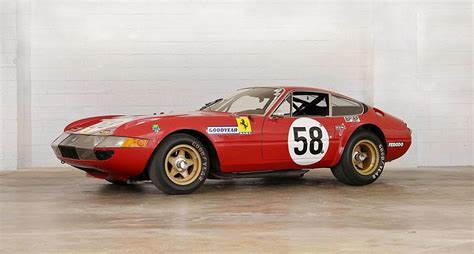When discussing the rich history of motorsport, few names evoke the prestige and engineering prowess of Ferrari. Among the many remarkable stories attached to the prancing horse emblem, the tale of the Ferrari 250 LM that won the 24 Hours of Le Mans in 1965 stands out as both a testament to determination and a watershed moment in racing history. This iconic car, the only privately entered Ferrari to ever win the grueling endurance race, is now seeking a new owner, with an estimated price tag of $26 million.
A Unique Triumph: The 1965 24 Hours of Le Mans
In the pantheon of Ferrari’s racing achievements, the victory at Le Mans in 1965 occupies a special place. The car, entered by the North American Racing Team (NART), was piloted by Jochen Rindt and Masten Gregory, with an instrumental assist from Ed Hugus. It remains the last Ferrari to secure an outright victory at the world’s most famous endurance race until the automaker’s triumphant return in 2023.
What makes this victory even more extraordinary is the context in which it occurred. By 1965, Ferrari faced stiff competition from manufacturers like Ford, whose GT40 had been developed specifically to dethrone Ferrari at Le Mans. Ferrari’s own factory team was focused on their prototypes, leaving the 250 LM, a GT-class car with mid-engine design, to be fielded by NART, a privateer team led by the legendary Luigi Chinetti.
This decision underscored the faith Ferrari placed in Chinetti, a former Le Mans winner and Ferrari distributor in North America, whose NART team had consistently delivered strong performances. The 250 LM’s victory was a dramatic upset, made possible by a combination of resilience, strategy, and a bit of fortune as rivals faced mechanical failures.
The Ferrari 250 LM: Engineering Excellence
Introduced in 1963 as the successor to the legendary 250 GTO, the Ferrari 250 LM represented a radical departure from Ferrari’s traditional front-engine sports cars. The “LM” in its name stood for Le Mans, signaling the car’s intended purpose. It featured a mid-engine layout, a configuration Ferrari initially resisted but adopted following the success of its competitors.
Under its sleek, aerodynamic bodywork lay a 3.3-liter V12 engine producing around 320 horsepower. This power, coupled with a lightweight chassis, gave the 250 LM exceptional speed and handling. The car was designed by Pininfarina, with Scaglietti handling the construction, ensuring it retained Ferrari’s trademark elegance while prioritizing performance.
Despite its capabilities, the 250 LM faced challenges in securing homologation as a GT car, as Ferrari did not produce the required 100 units. As a result, it often competed in the prototype class, where it faced more advanced and better-funded competitors. Nevertheless, the car’s versatility and reliability made it a favorite among privateers like NART.
The Role of NART and Luigi Chinetti
Luigi Chinetti’s North American Racing Team played a pivotal role in Ferrari’s racing success during the 1960s. Chinetti, an accomplished driver and Ferrari enthusiast, recognized the potential of the 250 LM despite its classification struggles. His team’s 1965 Le Mans entry capitalized on the car’s strengths: durability and balance.
The NART 250 LM, chassis number 5893, faced a daunting field that included the dominant Ford GT40s and Ferrari’s own factory prototypes. The race was grueling, with numerous competitors dropping out due to mechanical issues. Rindt and Gregory, supported by Hugus, drove a flawless race, navigating the treacherous Circuit de la Sarthe with precision and grit. Their victory was as much a testament to their skill and Chinetti’s leadership as it was to the 250 LM’s engineering.
A Legacy of Exclusivity and Value
Today, the Ferrari 250 LM is one of the most coveted collector cars in the world. Only 32 examples were built, making it rarer than the famed 250 GTO. Its combination of historical significance, aesthetic beauty, and technical excellence has cemented its status as a holy grail for automotive enthusiasts.
The car’s rarity and pedigree are reflected in its market value. In 2015, a similar 250 LM fetched $17.6 million at auction, and values have continued to climb as the global collector car market grows. The $26 million asking price for the Le Mans-winning example is a reflection of its unique place in racing history.
Beyond its monetary value, the 250 LM represents a bygone era of motorsport, where privateer teams could challenge and even surpass factory-backed efforts. Its victory at Le Mans is a reminder of the unpredictability and romance that make endurance racing so compelling.
The Cultural Impact of the 1965 Victory
The 1965 Le Mans triumph was significant not only for Ferrari but for the broader motorsport community. It marked the end of an era where European manufacturers dominated the race, as Ford’s GT40 dynasty began the following year. The victory also underscored the importance of privateer teams in keeping the spirit of competition alive.
The 250 LM’s success inspired a generation of drivers and engineers, showcasing the potential of mid-engine designs in endurance racing. It also solidified Ferrari’s reputation as a builder of not just beautiful cars but machines capable of conquering the toughest challenges in motorsport.
The Car’s Journey to Market
The Le Mans-winning 250 LM has had a storied life beyond the racetrack. It has passed through the hands of prominent collectors, each contributing to its preservation and ensuring its legacy endures. Restored to its original specifications, the car remains a time capsule of 1960s motorsport.
Its sale presents a rare opportunity for collectors to own a piece of racing history. Few cars can claim the dual honors of a Le Mans victory and the Ferrari badge, making this 250 LM a truly unparalleled offering. The $26 million price tag, while staggering, reflects its irreplaceable status.
Final thoughts
The Ferrari 250 LM’s story is one of innovation, resilience, and triumph against the odds. As the only privately entered Ferrari to win Le Mans, it occupies a unique niche in the annals of motorsport. Its legacy continues to inspire admiration and awe, both for its achievements on the track and its enduring beauty.
As this iconic car seeks a new owner, it serves as a reminder of the passion and ingenuity that define Ferrari and the racing world. The $26 million asking price is more than a reflection of its rarity; it is a testament to the value of history and the enduring allure of the prancing horse.
No comments yet.








